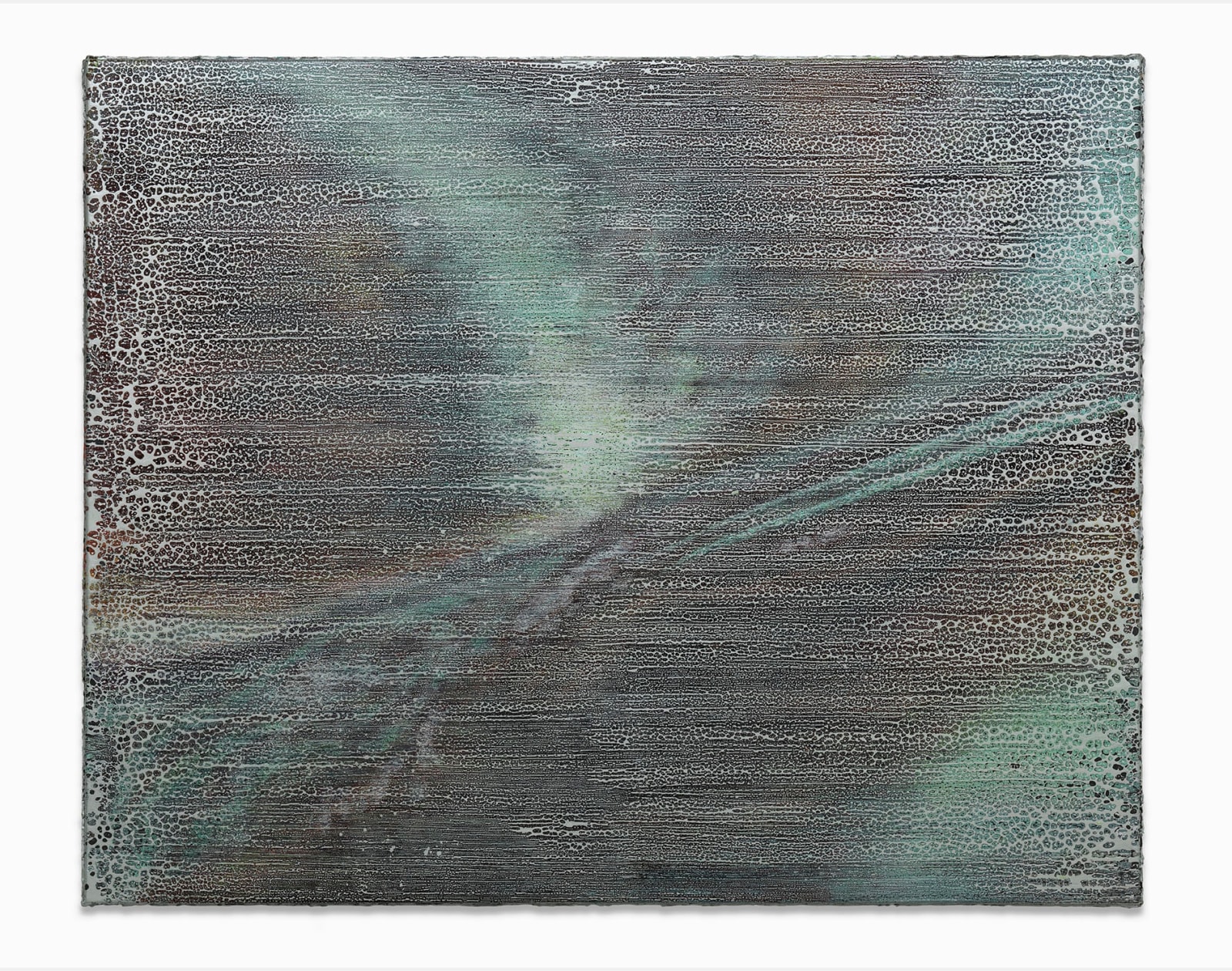Brett Ginsburg
Carapace 202508141629, 2025
acrylic on canvas
121 x 151 x 2.5 cm
47 3/4 x 59 1/2 x 1 in
unique
47 3/4 x 59 1/2 x 1 in
unique
“The images in the 'Carapace' series come from a digital model of a beetle that I captured and explored. The digital reduction of the insect into a hollow shell, stripped...
“The images in the 'Carapace' series come from a digital model of a beetle that I captured and explored. The digital reduction of the insect into a hollow shell, stripped of its anatomy, feels uncanny to me, especially having studied evolutionary biology. Within the 3D space, the viewer can move through the form, collapsing the boundary between inside and outside.
That navigation feels spatially disorienting, and I see that reflected in the paintings. You can’t tell if you’re looking at something close or far, or whether it’s a subject, a landscape, or a celestial expanse. I was drawn to how the beetle’s structural color and mirrored reflections distort space. In the digital model, ‘structural color’ becomes a texture map—a surface that’s assigned rather than naturally formed. It’s a paradoxical mimicry of something that, in nature, is integral and light-reflective.
True structural color exists within biological forms—iridescent, bioluminescent, reflecting light rather than absorbing it. These qualities relate to my painting practice, where reflected light destabilizes perception and requires physical movement around the surface. I hold onto form in painting for its ability to contain multiplicity, and I’m most interested when light itself becomes a condition of viewing, a way of revealing form. Structural colors that diffract light remind me of automotive paint, where metallic flecks unify the surface and disguise imperfections.”
-Brett Ginsburg
That navigation feels spatially disorienting, and I see that reflected in the paintings. You can’t tell if you’re looking at something close or far, or whether it’s a subject, a landscape, or a celestial expanse. I was drawn to how the beetle’s structural color and mirrored reflections distort space. In the digital model, ‘structural color’ becomes a texture map—a surface that’s assigned rather than naturally formed. It’s a paradoxical mimicry of something that, in nature, is integral and light-reflective.
True structural color exists within biological forms—iridescent, bioluminescent, reflecting light rather than absorbing it. These qualities relate to my painting practice, where reflected light destabilizes perception and requires physical movement around the surface. I hold onto form in painting for its ability to contain multiplicity, and I’m most interested when light itself becomes a condition of viewing, a way of revealing form. Structural colors that diffract light remind me of automotive paint, where metallic flecks unify the surface and disguise imperfections.”
-Brett Ginsburg

